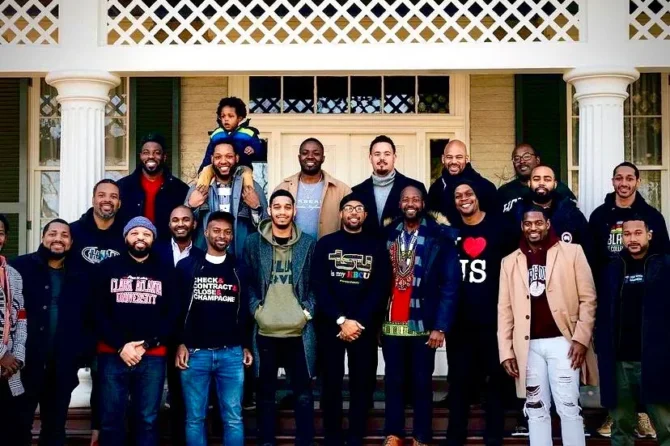By Amena Talajawala
The writer is an undergraduate at the University of Maryland, College Park.
Food insecurity is a growing concern for many Marylanders, particularly for those in Prince George’s County. About 17% of Maryland’s total food insecure population is concentrated in Prince George’s County, with many of those people in minority communities. One in seven people in the county are hurt by food insecurity.
Maryland’s most food insecure area, located in District 24, encompasses zip code 20743, which includes cities like Capitol Heights, Fairmount Heights, Walker Mill, Seat Pleasant, Coral Hills, and Pepper Mill Village. Too many Prince Georgians do not know where and when their next healthy meal is coming from — this is an ever-growing issue.
The lack of a stable food system also contributes to declining public health outcomes. The food insecure population faces problems such as higher rates of anemia, cognitive defects, depression, and chronic health conditions, like diabetes, hypertension, and obesity as a result of lack of access to affordable healthy meals. Children, in particular, are impacted by this growing problem, contributing to an over 16% child obesity rate in the county. Declining health in turn causes higher health care costs for an already struggling population. Marylanders, especially Prince Georgians, need a lasting long-term solution to food insecurity because they deserve a fair equitable opportunity to live their best lives.
Although state, county, and local leaders have made significant strides in combating food inequity, much work remains. Prince George’s County released its Food Desert Relief Plan, the county created its Food Equity Council in 2017, and there are over 30 local pantries in the area. Local District 24 community activist Christopher Stevenson, who suffered from food insecurity and malnourishment as a child, has held a number of community events to combat food insecurity.
Among many things, Stevenson organized the “District 24 Feed the Community” program to feed in-need district residents and provide families with holiday gifts and toiletries and the “District 24 Adopt-a-Senior Day” to provide seniors across with hand delivered hot meals, groceries, and other resources during the COVID-19 pandemic. These actions have assisted in reducing the county’s food insecure population.
However, there needs to be stronger action at the state level. Maryland must combat food insecurity by improving access to healthy foods in public schools, increasing the number of supermarkets, and expanding access to locally grown foods. Aggressively pursuing such policies will ensure swift and impactful action is taken to help struggling families and children.
Improving access to healthy foods in public schools is the first step in combating child food insecurity and the high child obesity rate. Elementary schools are currently allowed to pass items like ketchup and salsa as vegetables in lunches. Proteins often include fried and fatty meats. Overall sugar, fat, and salt content in school meals are very high. Implementing higher school lunch standards at the state level will ensure children have access to at least one healthy meal a day.
Increasing the number of supermarkets is essential to decreasing food insecurity. The Maryland National Capital Parks and Planning Commission identified over 20 food deserts, areas where there is low or no access to super markets, in Prince George’s County in 2017. Grocery stores tend to leave food deserts due to a high concentration of low-income residents, high operating costs, profit margin erosion, and increased industry competition. The state should incentivize stores to operate in food deserts by offering higher tax credits to grocery stores operating in food deserts and by allowing these markets to sell alcohol, which will decrease financial losses for the stores.
The state should expand access to locally grown food through the expansion of urban gardens and farmers markets so that all Marylanders can enjoy fresh local meat and produce.
Expanding urban agriculture encourages community growth of food. Residential gardens in communities allow green spaces to be used in a creative manner while instilling a sense of community among residents. Maryland should ensure a certain percentage of all urban spaces are dedicated to urban agriculture.
Although the state is home to a number of farms, there are few farmers markets in Prince George’s County. The cost of farmers markets’ goods can also run much higher than that of a typical grocery store. The state should encourage the expansion of farmers markets and subsidize the cost of certain goods and create a voucher system so that low-income residents can afford to shop at farmers markets. All Marylanders deserve the right to enjoy the food grown in our state.
Food insecurity is an ever growing issue in Maryland and Prince George’s County. Although the local government and leaders have taken some action against fighting food insecurity, it is not enough. Too many families and individuals struggle to eat healthy filling meals each day.
It is time for leadership to take action by providing access to healthy foods in public schools, increasing the number of supermarkets, expanding access to locally grown foods, and much more. Please join me in demanding action from our local leadership.
This article was written as Guest Commentary by the Washington Informer, read more articles like this here.
Photo: Pexels.com photo by Mark Stebnicki.










